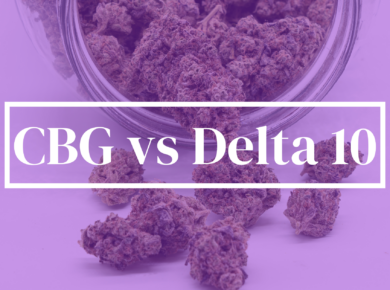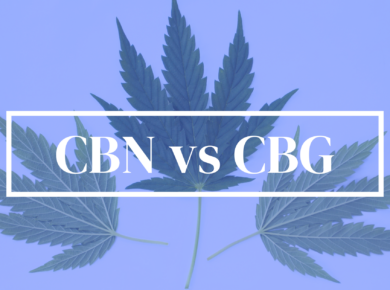While cannabis can be grown in various conditions, some states are now pushing toward outdoor or greenhouse production. This can be very exciting for some growers, returning the plant back into its original, natural environment.

Why Grow Cannabis Outdoors
The great outdoors can be the perfect way to grow cannabis. Outdoor grows allow for the plants to spread out and grow in their natural environment.
Powerful UV rays from the sun, deep soil for thriving root systems and optimum ventilation from wind and open air make outdoor grows acctractive to eco-friendly producers. The lack of electricity for ventilation, light, and air flow makes outdoor grows extremely sustainable.
Watering systems for outdoor cannabis can range from simple irrigations systems to mechanical rolling systems. These, like all things, are based on what best suits your particular growing situation. For growers in climates that receive more rainfall, plants may not require as much water as indoor grows.
Another benefit of growing cannabis outdoors is increaased size. Outdoor grows result in taller and larger varieties of cannabis.
Some sativas can grow in excess of 9ft (some even up to 20ft) and each branch can develop full and dense colas. This leads to a fuller, more bountiful harvest.
Join the exclusive network of cannabis and hemp business on Kush.com now >>
Cons of Growing Cannabis Outdoors
While growing cannabis outdoors can be a rewarding experience, it is not all positive. Pests and disease are the two main factors that growers worry about when growing outdoors.
Some farmers make the argument that outdoor plants need to be chemically sprayed to prevent pests. Since the buds are sticky, the pesticides do not wash off, leading to a less than ideal product for harvest. Residual chemicals on your harvest may lead to lost crops or lead to difficulty in finding a buyer.
Occasionally, overspray from neighboring farms can cause pesticides and other contaminants to make their way onto your crops. While this is not common, it has been an issue in Washington State throughout 2019.
While this is sometimes argued, it does not have to be the case. Outdoor pests can be treated in alternative, organic,sustainable ways. Still, it is important to consider that anything added to your crops could impact your final return.
The influence of chemical corporations who make their livings off of the sales, lead the charge in this sphere of influence.
However, beneficial insects and protozoa can be used to fend off a wide array of pest, fungi, and bacteria. The more that hemp and cannabis is grown outdoors, the more sustainable solutions will be found to prevent pests naturally.
Another argument against outdoor growing is that the crop has the potential for male plants to spring up at any time and take the crop into a reproductive as opposed to a flowering state.
This can be true, but with careful monitoring and inspection, can be avoidable. Outdoor crop size should be manageable and able to be monitored, by a sole farmer or a group of crop cultivators.
Most get into trouble by going too big too fast. It’s better to have a small group of vigorous healthy outdoor plants than 10 acres of plants where you never see half of them. The only exception to this would be for growers looking to grow mass quickly to process for extraction.
[PRO TIP] The rows in an outdoor cannabis crop can be spaced 6 ft apart. Plants should be spaced 4 ft apart down the row, for a more manageable harvest when the time comes.
Some farmers leave an open row every 6-10 rows to allow for equipment or vehicles lanes during harvest and transport.
Why Grow Cannabis in a Greenhouse
Growing cannabis or hemp in a greenhouse can blend the best of indoor growing with the best of outdoor growing. It’s a nice way for the indoor grower to transition to outdoor applications. It also allows for a more controlled environment in colder or more arid outdoor environments.
The factors that go into greenhouse growing are:
- Temperature
- Humidity
- Air Flow Manipulation.
These factors can greatly increase yield and can allow for a more controlled and easily monitored solution. It can also be a more eco-conscious solution over indoor growing as the main UV light source is the sun.
Light can still be manipulated to control flowering cycles by the use of tarps or covers at certain times, regulating growth cycles.
The problem of pests does exist in any growing environment, and greenhouses are no exception. Yet, since it is separate from the outside world, pest management can be more manageable in a greenhouse.
The watering systems within a greenhouse setting can be more user friendly as well. Simple watering cans can be used to personally water each plant. The framed structure of the house also allows for watering sprinklers to be suspended making watering as easy as flipping a switch.
For maximum benefit, the ceiling of greenhouse (and the walls in certain settings) should be made of clear glass to allow for complete UV penetration.
Fogging windows or covering the top (or sides) does let in some UV, but it is not enough for maximum crop growth. Fogged windows can also lead to a “hothouse” as opposed to a greenhouse.
If the tops or side of the green house have to be covered or fogged for any reason, the use of supplemental UV lights may need to be brought in for max yield.
Greenhouses also allow room for experimentation. A hydroponic system can be set up within a greenhouse to capitalize on the most effective use of space if water systems are readily available.
Regardless if you grow solely in a greenhouse or not, they are a nice addition to any growing operation. They allow for a room that is out of the elements or that introduces natural elements all the while being self contained. This is a valuable space for sowing seedlings, managing newly purchased clones, quarantining any necessary plants, or allowing for a separate seed harvesting space in your growing operation.
[PRO TIP] Although not all states require the labeling of how/where the plant was grown, adding a greenhouse and an outdoor section may be a nice way to stay ahead of the curve. Try incorporating a few different styles of growing in your operation to appeal to a broader buyer base.
Join the exclusive network of cannabis and hemp business on Kush.com now >>
Conclusion
Whether you are growing cannabis in a greenhouse that meets all your needs or the open fields where it once grew wild, both are a rewarding and powerful addition to any grower’s set up.
They are recommended not only for their ability to produce great product, but also for adding a new experience in cultivating more knowledge in your grower-tool-belt.
This knowledge can open doors between other growers and potentially lead to more productive harvests as well as solutions to economic problems we face in an ever changing environment.





